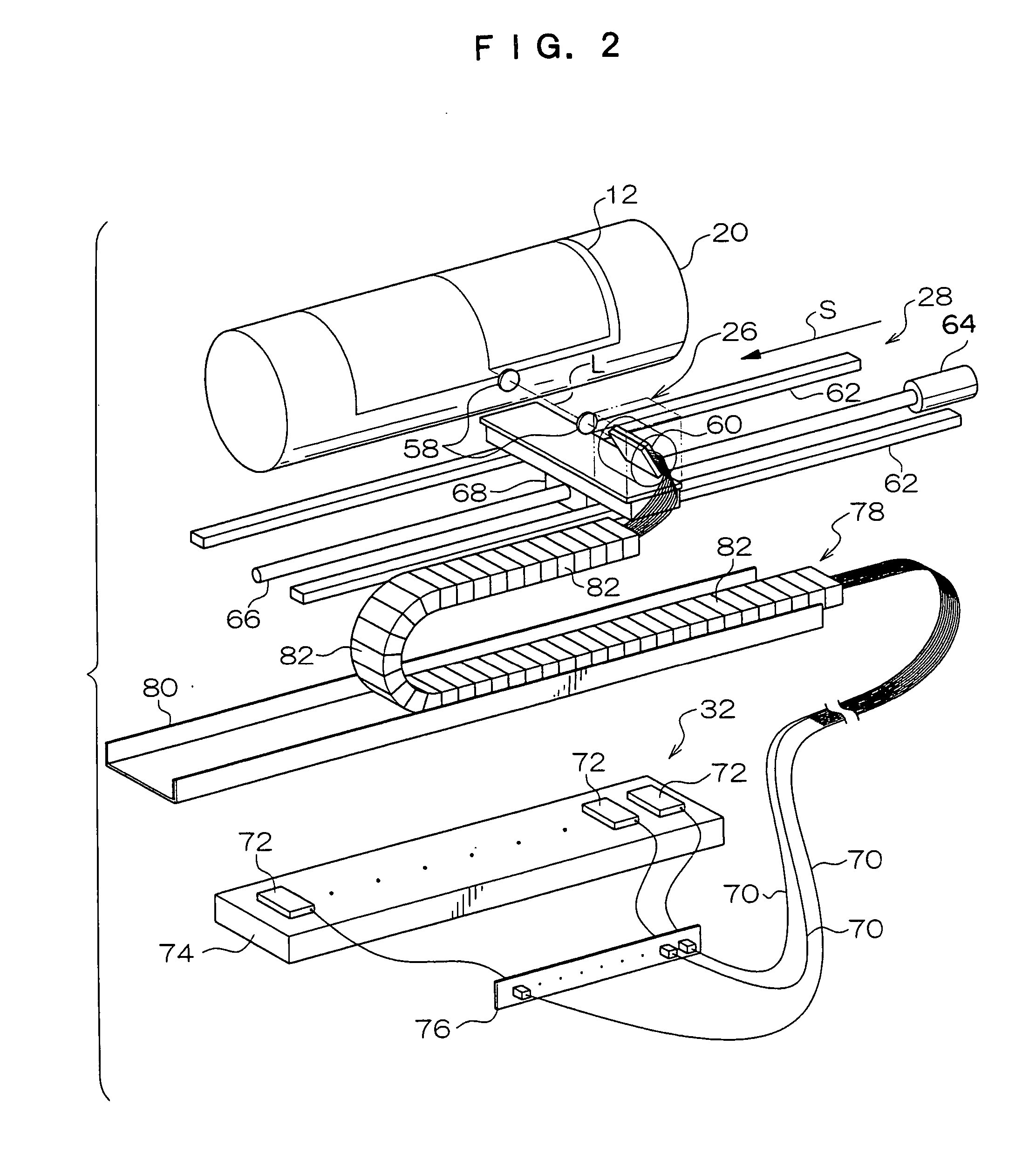Image forming method and image exposure device
a technology of exposure device and image, which is applied in the field of image forming method and image exposure device, can solve the problems of insufficient strength of image portion and deterioration of printing durability, and achieve the effects of increasing thermal energy for image-forming, superiority, and increasing the movability of active species
- Summary
- Abstract
- Description
- Claims
- Application Information
AI Technical Summary
Benefits of technology
Problems solved by technology
Method used
Image
Examples
first embodiment
IMAGE EXPOSURE DEVICE
FIGS. 1 to 5 show the image exposure device of the first embodiment according to the invention. In the image exposure device 10, a planographic printing plate precursor 12 is scanning-exposed by infrared laser L (hereinafter referred to as “IR laser L”) modulated by digital image information, whereby an image (latent image) corresponding to the digital image information is formed on the planographic printing plate precursor 12. The planographic printing plate precursor 12 is called as a treatless printing plate since it requires no specific developing process. The planographic printing plate precursor includes a substrate made of aluminum or an aluminum alloy and an image recording layer formed on the substrate. The image recording layer (hereinafter, sometimes simply referred to as “recording layer”) may include a hydrophobic precursor and a light-to-heat converting agent; or it may include a polymerizable compound, a polymerization initiator and a light-to-he...
second embodiment
IMAGE EXPOSURE DEVICE
FIG. 6 shows the image exposure device according to the second embodiment of the invention. In the image exposure device 100 of the second embodiment, the portions being common with those of the image exposure device 10 of the first embodiment have the similar symbols and the explanations thereof are omitted.
The image exposure device 100, similarly to the image exposure device 10 of the first embodiment, carries out scanning-exposure of the planographic printing plate precursor 12 by IR laser L modulated based on a digital image information to form an image corresponding to the digital image information on the planographic printing plate precursor 12. As shown in FIG. 6, the differences of the image exposure device 100 from the image exposure device 10 are that the plate feeding stage 16 and the ejection tray 18 are omitted, an automatic loader 102 is added as an optional unit instead of these plate feeding stage 16 and ejection tray 18, and that the post-heat...
third embodiment
The image recording layer according to the invention includes polymer particles including a heat reactive group and a light-to-heat converting agent. When the heat reactive group is a polymerizable group, it is preferable for the image recording layer to include a polymerization initiator that generates a reaction initiator (active species) due to energy of image exposure.
((c) Polymer Particles Including a Heat Reactive Group)
The polymer particles including a heat reactive group, which is used as a hydrophobic precursor used for the third embodiment of the image forming methods according to the first to third aspects of the invention can be divided into heat-curable polymer particles, which have heat-crosslinkable functional group in a polymer and form crosslinking structure each other and cure by heating to exhibit a property that they do not melt again, and polymer particles having so-called heat reactive functional group, which can react by heat to form an interaction between ...
PUM
 Login to View More
Login to View More Abstract
Description
Claims
Application Information
 Login to View More
Login to View More - R&D
- Intellectual Property
- Life Sciences
- Materials
- Tech Scout
- Unparalleled Data Quality
- Higher Quality Content
- 60% Fewer Hallucinations
Browse by: Latest US Patents, China's latest patents, Technical Efficacy Thesaurus, Application Domain, Technology Topic, Popular Technical Reports.
© 2025 PatSnap. All rights reserved.Legal|Privacy policy|Modern Slavery Act Transparency Statement|Sitemap|About US| Contact US: help@patsnap.com



